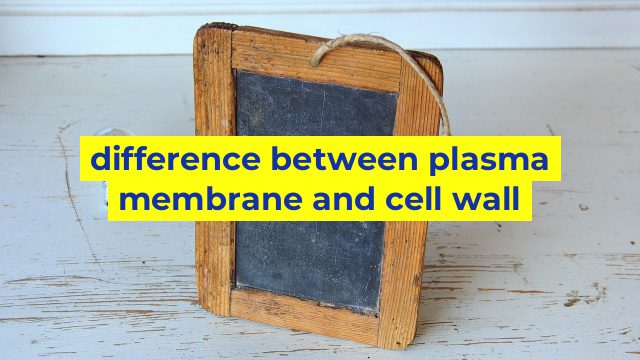Difference Between Plasma Membrane and Cell Wall
The cell is the basic unit of life and is responsible for carrying out all the necessary functions to keep an organism alive. The cell is enclosed by a boundary that separates the inside of the cell from the outside environment. This boundary is made up of two main components, the plasma membrane and the cell wall. Although the plasma membrane and cell wall are both involved in maintaining the integrity of the cell, there are some significant differences between the two.
Plasma Membrane
The plasma membrane is a thin, flexible layer of lipids and proteins that surrounds the cell. It is also known as the cell membrane or cytoplasmic membrane. The primary function of the plasma membrane is to regulate the movement of substances in and out of the cell. It is selectively permeable, which means that only certain molecules can pass through it. Small molecules, such as oxygen and carbon dioxide, can diffuse through the plasma membrane, while larger molecules, such as proteins and polysaccharides, need to be transported across the membrane by specific transport proteins.
The plasma membrane also plays a role in cell recognition and communication. Proteins on the surface of the membrane act as receptors and can recognize and bind to specific molecules, such as hormones and neurotransmitters. This interaction can trigger a response inside the cell, such as the activation of an enzyme or the release of a neurotransmitter.
Cell Wall
The cell wall is a rigid layer that surrounds the plasma membrane in many cells. It is primarily composed of cellulose or chitin, depending on the type of organism. The cell wall provides structural support to the cell and helps to maintain its shape. It also prevents the cell from bursting under high pressure.
Unlike the plasma membrane, the cell wall is not selectively permeable. Instead, it acts as a barrier to many substances, including water and large molecules. This means that cells with cell walls must have specialized transport proteins to move these substances across the membrane.
In addition to providing structural support, the cell wall plays a role in communication and defense. It contains proteins and carbohydrates that can act as signals to other cells or as barriers to pathogens.
Conclusion
In summary, the plasma membrane and cell wall are both important components of the cell boundary, but they have different functions. The plasma membrane regulates the movement of substances in and out of the cell and is involved in cell recognition and communication. The cell wall provides structural support and acts as a barrier to many substances, while also playing a role in communication and defense. Understanding these differences can help us to better understand the complex workings of the cell.
Table difference between plasma membrane and cell wall
| Plasma Membrane | Cell Wall |
|---|---|
| Found in all types of cells | Found only in plant cells, fungal cells, and certain types of bacteria |
| Composed of a phospholipid bilayer with embedded proteins and carbohydrates | Composed of cellulose (in plants), chitin (in fungi), or peptidoglycan (in bacteria) |
| Regulates the flow of molecules in and out of the cell | Provides structural support to the cell and helps maintain cell shape |
| Flexible and selectively permeable | Rigid and not permeable |
| Has many functions including cell recognition and signaling | Primary function is structural support |
